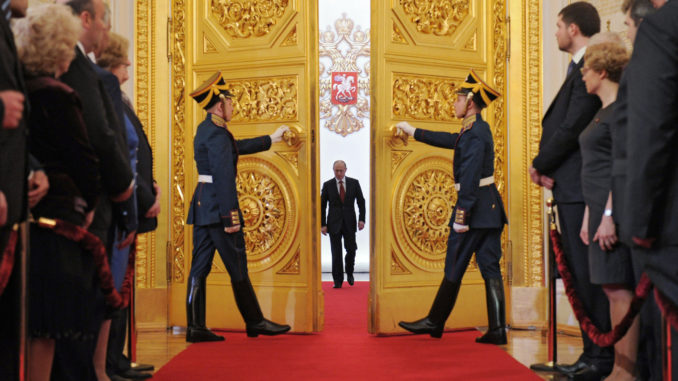
2020 has been a year to forget for the United States.
Throughout the course of 2020, the country has been faced with an global pandemic, the worst economic crisis since the Great Depression, and a racial crisis. Can the US maintain its world-class level of national security while these problems persist? Can they continue to contain Vladimir Putin’s Russia and Xi Jinping’s China?
Though, all the while the US has been suffering, Russia’s president, Vladimir Putin, has been feeling similar pressures, as the great chain attempts to pull away from him.
Last week, the New York Times wrote the article “Putin, Long the Sower of Instability, Is Now Surrounded by It,” while in The Financial Times, “Putin Watches as Flames Engulf Neighborhood.”
Consider the situation today in Russia’s “near abroad,” the former republics of the USSR that broke from Moscow’s rule between 1989 and 1991.
The Baltic States — Estonia, Lithuania and Latvia — are already in the U.S.-led NATO alliance. Georgia in the Central Caucasus, the birthplace of Stalin, fought a war against its Russian neighbor in 2008 and is now a friend and ally of the United States.
Ukraine, the most populous of the 14 republics to break away from Moscow, is now the most hostile to Moscow, having watched its Crimean Peninsula in the Black Sea be annexed by Putin in 2014. As a result, the US, the EU responded with heavy sanctions, ones which collapsed the Ruble and sent Russia into a financial crisis.
Now, Belarus, Russia’s closest neighbor to the west, is in a political crisis with weekly demonstrations demanding the ouster of Putin’s ally, longtime autocrat Alexander Lukashenko, after a fraudulent election. The shame election was condemned universally by European Leaders. Recently, French President Emmanuel Macron visited exiled opposition leader Tikhanovskaya.
Putin could be forced to do what he has no desire to do — forcefully intervene to put down a popular uprising that could cause Belarus to follow Ukraine into the Western camp.
Now, in the South Caucasus, two former republics of the USSR, Azerbaijan and Armenia, are again in an open war over Nagorno-Karabakh, an Armenian enclave wholly within Azerbaijan.
While Armenia, an ally of Russia, is pleading for intervention by Moscow to halt the war, Turkey is aiding the Azeris militarily, and they seem to be gaining the upper hand.
Four thousand miles away, in Russia’s Far East, in the city of Khabarovsk, which is as close to China as Dulles Airport is to D.C., anti-Putin rallies have become a constant feature of politics.
Last summer, Putin’s political rival Alexei Navalny was poisoned with Novichok, a nerve agent developed in Soviet laboratories. Navalny has now become a live martyr and more potent adversary as the Kremlin has failed to come up with a satisfactory explanation for what appears to have been an attempted assassination. New German and French sanctions on Russian officials seem inevitable.
Russians have also suffered mightily from the coronavirus and what it has done to their economy, despite the Sputnik V vaccine.
Looking at Putin’s foreign policy adventures, we can see similar results.
In Syria, where with Russia’s help, Putin has helped save Bashar Al-Assad’s regime. Despite this, the continuing conflict in Syria is bleeding both money and resources from Russia, while the US aims to completely withdrawal from Iraq, to save lives and resources, while also building a historic relationship between Israel and the UAE.
In comparison to fellow BRICS member, China, Russia’s economy and population remains only one-tenth the size of China’s economy, and its population.
Instead of the needless competition and cold conflict amongst the two countries, the US and Russia should focus on a stronger relationship. China and Iran pose major threat to the interests of both countries, both in terms of national and economic security.
The two military superpowers would be stronger together than seperated.
Works Cited:
https://www.zerohedge.com/geopolitical/putins-got-his-problems-too
